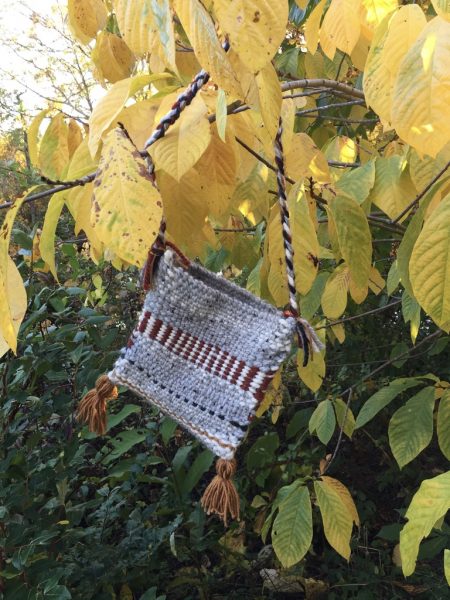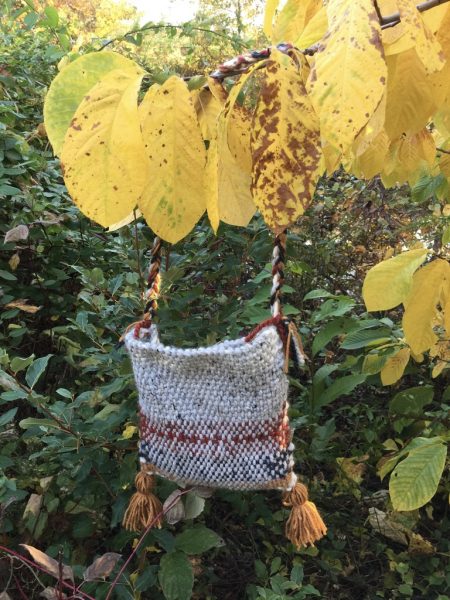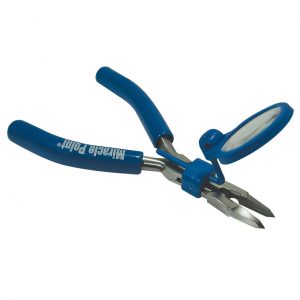It began subtly, but over time the pain escalated in my right hand. After knitting, my fingers ached and were swollen. Given what I did every day—a lot of knitting, computer work, and piano practice —this didn’t strike me as unusual, but when I decreased these activities, the pain and swelling remained. I saw a hand doctor and went for physical therapy in a clinic tied to his orthopedic practice. The diagnosis was two related conditions: an inflammation of my finger tendons (tenosynovitis), and carpal tunnel syndrome.
“You need to stop, or drastically limit knitting,” the doctor advised, to my horror. Not only do I adore knitting, I write about it professionally. Knitting is so integral to my life that reducing my practice felt devastating. But knitting was injuring my hand; I knew the doctor was right. To say I found this depressing is a major understatement.

A compassionate friend gave me a rigid heddle table loom she’d hardly used, as another option for working with fiber. Despite a manual that emphasized its easy operation, the loom seemed dauntingly complex. Whenever I looked at it, I felt more depressed. My general frustration was fed by so many factors—my disabled hand, the loss of knitting, the huge stash of yarn I’d acquired over years. What would I do with it all if I couldn’t knit, and I couldn’t deal with the table loom?
Then serendipity struck.
I learned that Lion Brand supports several kinds of very basic looms, and I determined to try them. The Martha Stewart Crafts DIY Easy Weaver recently arrived, and I’m thrilled to report that this has changed everything. It’s not just that it’s a genius kind of invention that’s provided an elegant solution for me. It’s also that using it for only a short time has let me understand fundamental weaving principles, and offered new ways to play with yarn. So far I’ve woven a stitch sampler with several colors of Vanna’s Choice worsted, and have almost completed the Boho shoulder bag (which uses Wool-Ease® Thick & Quick® as well as Vanna’s Choice® worsted), one of the many free patterns available in Lion Brand’s Pattern Database.

The loom’s instructions are augmented by excellent video tutorials on everything from setting up the loom to creating finishing touches, like tassels. If you can follow knitting or crochet instructions, you’ll find the weaving patterns disarmingly simple, as is the entire operation of the DIY Easy Weaver. Best, for many folks with various hand problems, working with the loom is essentially stress and pain free.

Martha Stewart Crafts® DIY Weaver®
I asked Victoria Moitoso (Director of Occupational and Hand Therapy at Foundry Orthopedics and Sports Medicine in Providence, RI) to observe while I wove. She liked that the shuttle and the comb for compressing the weft were relatively large (bigger objects work best for those with hand disabilities), and that the manipulation was almost equally distributed between both hands. As the smallish warping pegs could be challenging for some to remove from the loom, we substituted needlenose pliers, like the Pleezers 5.75” Pliers with Magnifier for fingers. Our consensus: the DIY Easy Weaver provides a platform for working with fiber that’s user-friendly for folks with the commonest hand disabilities.

Pleezers: 5.75” Pliers with Magnifier
Truthfully, even if I had no hand problem, I’d enjoy this lovely little loom. It’s compact, sturdy, and lightweight. You can use it almost anywhere, and with any kind of Lion Brand yarns. The creative possibilities are vast. And besides all that, using yarn in a new way generates interesting, unexpected ideas about fiber crafting.
For me, these discoveries have been inspirational and uplifting.